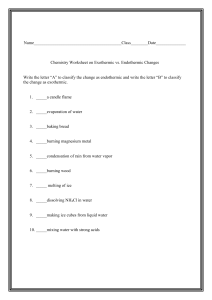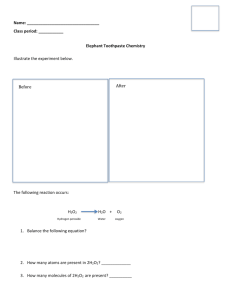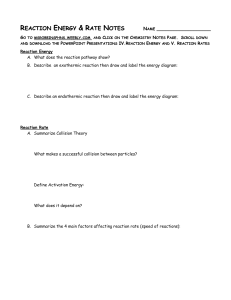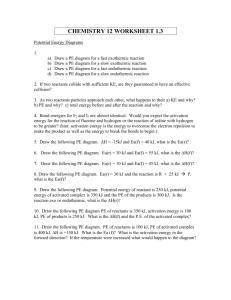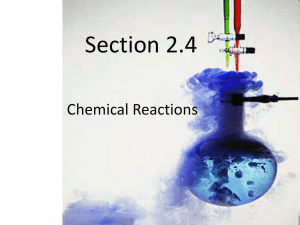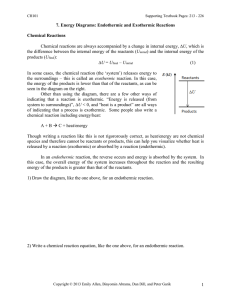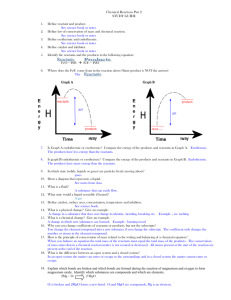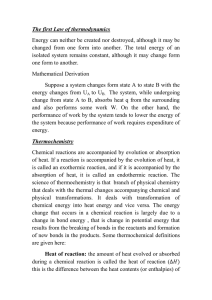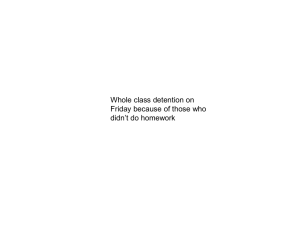Ch. 5: *Chemical Reactions*
advertisement
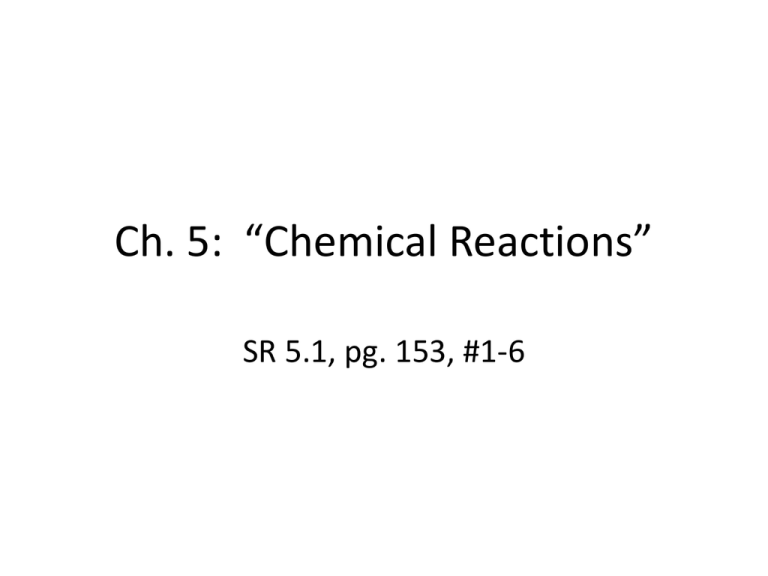
Ch. 5: “Chemical Reactions” SR 5.1, pg. 153, #1-6 1. Identify which of the following is a chemical reaction. a. melting ice b. burning a candle c. rubbing a marker on paper d. rusting iron a. NOT a chemical reaction b. chemical reaction c. NOT a chemical reaction d. chemical reaction 2. List 3 signs that could make you think a chemical reaction is taking place. • gas given off • formation of a precipitate • energy change • change in color • change of identity of substances 3. List 4 forms of energy that might be absorbed or released during a chemical reaction. • heat • light • electricity • sound 4. Classify the following reactions as exothermic or endothermic. a. paper burning a. exothermic with a bright flame b. endothermic b. plastics becoming c. exothermic brittle after being left in the sun. c. a firecracker exploding 5. Predict which atoms will be found in the products of the following reactions: a. Mercury (II) oxide, HgO, is heated & it decomposes. b. Limestone, CaCO3, reacts with hydrochloric acid, HCl. c. Table sugar, C12H22O11, burns in air to form caramel. a. Hg & O b. Ca, C, O, H, Cl c. C, H, O 6. Critical Thinking • Calcium oxide, CaO, is used in cement mixes. When water is added, heat is released as CaO forms calcium hydroxide, Ca(OH)2. What signs are there that this is a chemical reaction? Which has more chemical energy, the reactants or the products? Explain your answer. • Substances change identity, & energy is released. The reactants have more chemical energy because the energy of the reactants equals the energy of the products plus the energy released.

